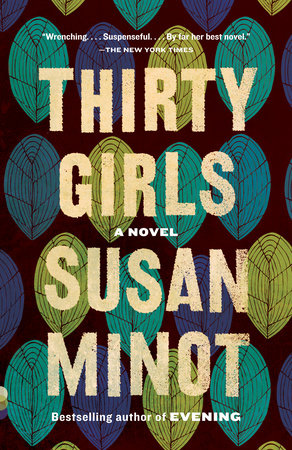Reading Group Center
- Home •
- Books by Category •
- Imprints •
- News •
- Videos •
- Media Center •
- Reading Group Center
Thirty Girls
By Susan Minot
1. What do you notice about the alternating narrators in the chapters at the beginning? Does the novel follow this structure throughout? Is the experience of this novel dependent on the contrast between the two stories and points of view?
2. At the beginning, Jane is “ready for anything different from what she’d known” (p. 29). We learn that she felt “bound…fiercely” to her husband although he rejected her (p. 39). Is it clear what has caused her sense of alienation from her life, or not so clear?
3. Minot sets up the historical background of her novel in a chapter narrated by Esther Akello. These events might not have been on the radar, at the time, of American readers of this novel. In what ways does the novel raise awareness of the distance between Americans and people who live in more dangerous parts of the world?
4. Sister Giulia and Bosco take on the courageous task of trying to rescue the girls, and Sister Giulia is forced to decide which thirty girls must remain with the rebels. How does she make this decision? What would you do if faced with a situation like this?
5. What is it about Harry that is attractive to Jane? What does the sex between Harry and Jane tell us about them? If her interest in him is sexual at first, how does it deepen into love? What elements of Minot’s writing style make their love scenes powerful?
6. Jane often feels moody and detached. She wishes that “she could observe the world with amusement and be inviting and light” (p. 126); at other times, she feels “united and whole” (p. 127). How do you relate to Jane’s shifting psychological and emotional states?
7. Esther tries to keep herself detached from what she experiences and witnesses: “For myself I tried to keep a calm place inside me. This place I thought of as my soul. I pictured it in the shape of a white marble bowl. … I used to think God sat in that shallow bowl” (p. 151). How well does this strategy work for her?
8. On the long journey into northern Uganda, Jane and her friends learn about violent chapters of the country’s history while also seeing wondrous sights like the source of the Nile, which makes Jane “aware of the romance in the word [Nile].… Then she thought of how in history at that moment, three hundred miles north of this peaceful gliding river, children were being yanked out of their homes, held captive, raped, infected with deadly disease, and made to kill” (p. 117). At another point, “they all stood…where Idi Amin had had people thrown in to be eaten by crocodiles” (p. 167). How do these descriptions illuminate Jane’s difficulty in comprehending these sights and this knowledge?
9. About being forced to participate in the murder of the girl from Gulu, Esther says that she told herself, “This is the worst thing that would ever happen” (p. 155). She later says, “I still do not so much care if I am good anymore or not. In these times it feels good to hate” (p. 159). If this novel is partly about the possibility of healing, how does Esther cope with the sense that she has lost her innocence and her humanity? How does she deal with having survived when her friend Agnes did not?
10. What is Jane seeking in life and on this journey? What is she trying to escape? What changes in her when she visits the camp and interviews Esther and the other?
11. Several small sections of the book are entitled “The You File” (pp. 99, 249, 293, 366). What is their relationship to the stories of Esther and Jane? Who is speaking in these pages?
12. Jane’s desire to come to Uganda began when she met Grace Dollo in New York, and walked home thinking, “I will do something” (p. 172-73). How unusual is it for someone to act on such a desire? When she visits the school from which the girls were taken, Jane thinks, “To learn of another’s suffering is to confront one’s own shame” (p. 203). How does this idea resonate throughout the novel?
13. Does anything prepare you for the shooting of Harry? How do you connect this element of the story with what Jane has already experienced in Africa? How does it affect the novel’s sense of closure?
14. What is striking about Minot’s writing style? Discuss a few passages that you found particularly memorable or evocative.


